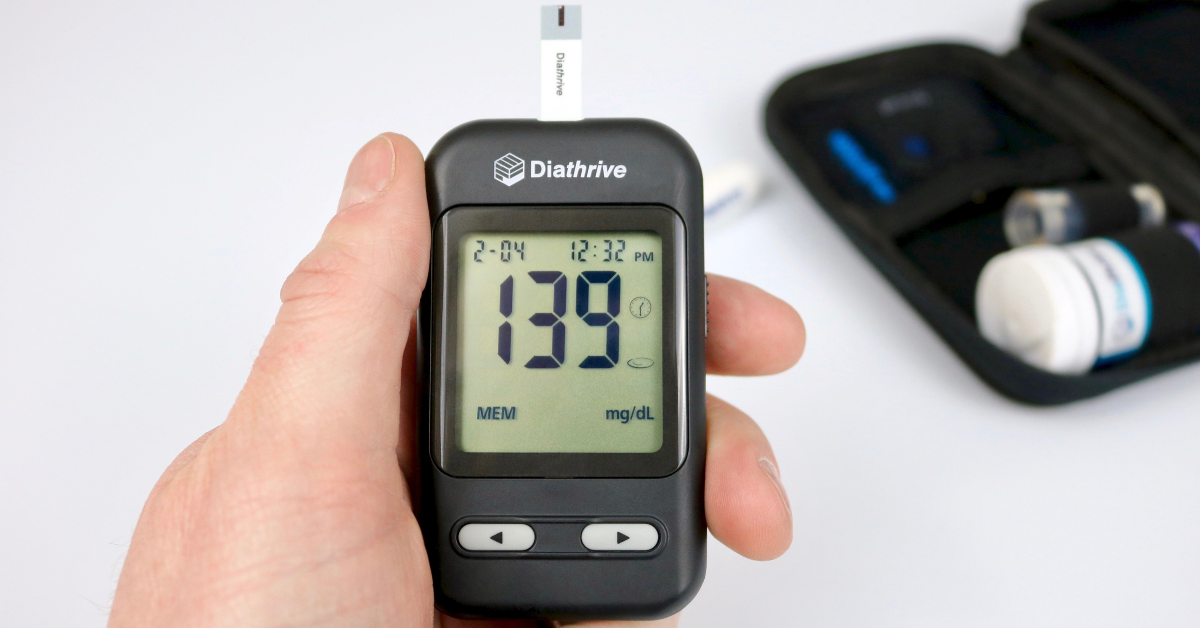
Why bother monitoring your blood sugar? Carla Cox, CDE, makes a strong case for the value monitoring can have for your health.
Diabetes is a disease of balance and a resulting "game" of numbers. Too much food (particularly carbohydrates) makes glucose values go up and aerobic exercise generally makes them drop. But how can we tell where the blood glucose is when our daily lives are always changing? Stress one day, out to eat another day, and an illness that creeps in, keeping us feeling lousy yet another. Or, perhaps it is a cortisone shot for an aching joint – and glucose values can soar.
Some persons with diabetes believe they can “feel” when glucose levels are outside of a normal range. But overwhelming evidence suggests that is not the case. Very high and very low levels can be noted by most people, or a sharp drop in glucose from a high number to a number within range. But overall, persons with diabetes can often be considerably out of the glucose range that is safe and healthy and have no idea they are there.
Case in point. Many persons are diagnosed with type 2 diabetes when blood glucose levels have been over 300 mg/dl for 3 months or more and potentially elevated for YEARS. They may have felt a bit tired, or been drinking more fluid than usual, but they are unaware that their glucose number is harmfully high.
Sandy's Story
Take Sandy – a 55-year-old woman who arrives for an annual visit with her provider. Generally, she feels pretty good but states she is quite tired and does not have the energy she used to have. She has her usual laboratory tests done – and her fasting glucose comes back at 343 mg/dl. Sandy has type 2 diabetes. She actually spends weeks denying that she has diabetes before her family convinces her to see a diabetes educator and start working towards better blood glucose control.
One of the topics at her visit is glucose monitoring. She is not crazy about poking her finger every day – but decides for two weeks she will try it. She is coached to check her glucose value with a finger stick prior to a meal and two hours after, changing which meal she checks around. She decides on Monday to check right before and two hours after breakfast, Tuesday before and after lunch, Wednesday before and after dinner, etc. Her targets are those of the American Diabetes Association, which she learned about in class: Less than 130 mg/dl before her meals and less than 180 mg/dl 2 hours after.
She starts learning about how different foods are affecting her glucose levels. After a salad at lunch with strawberries and yogurt, her BG is 178 mg/dl, but after a sandwich and chips, it is over 200 mg/dl. She can have ½ a sandwich and coleslaw with a glass of milk, and her blood glucose levels are within target. She experiments some more and finds that if she takes a walk after dinner, she can enjoy a larger dinner and still be within goal range.
She has become her own detective!
She also notes that if she skips her diabetes medication, her blood glucose values start to rise even if she eats sensibly – so she understands how important her medication is. She also has information to provide to her health care provider when she returns for her visit in 4 weeks. They review the glucose values together and are able to make some changes that get Sandy even closer to target.
Fast forward – Sandy has grown tired of checking her blood sugar and finds the prices too high – so she has stopped checking even intermittently, but does take her medication. She skips her annual visit and two years later, feels tired again and excessively thirsty. She decides to pick up some test strips and checks her glucose level prior to seeing her health care provider – 416 mg/dl? WOW! Her diabetes has changed.
It is not her “fault”. She did not gain weight, did not change her food plan and walks daily. What changed was the way her body uses insulin. This is the story of type 2 diabetes. Over time, there is a shift in the amount of insulin the body makes, and medications need to be adjusted to keep up. Because of elevated glucose for quite some time, Sandy has started to have some complications. They are NOT from the diagnosis of diabetes, but from not staying on top of it. It is the high glucose levels causing the damage.
Monitoring glucose and ACTING on the numbers (eating differently, changing medication, changing the timing and duration of exercise) will help you stay on top of your diabetes. It is NOT the diabetes that is causing most complications – it is the uncontrolled glucose! There are now many different medications to help you manage your diabetes along with lifestyle adjustments.
Take charge! Check your numbers and alert your care provider if you are doing your “diabetes job” and your diabetes is misbehaving!

